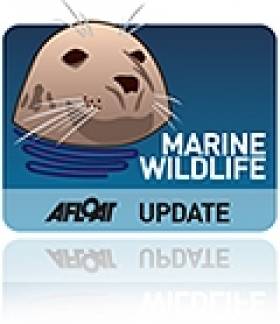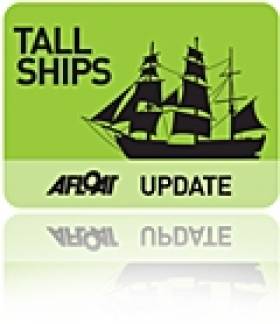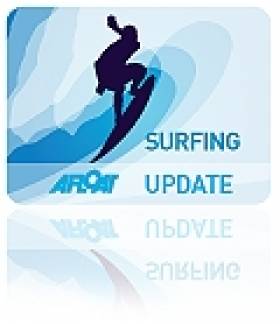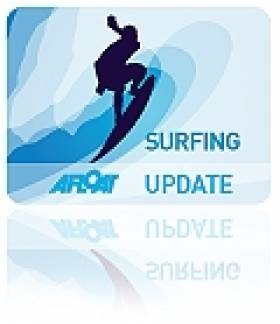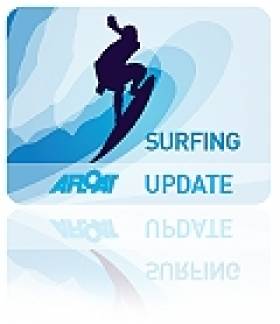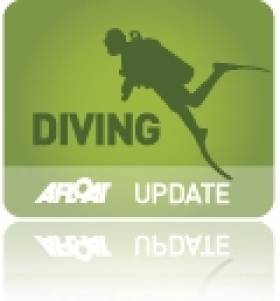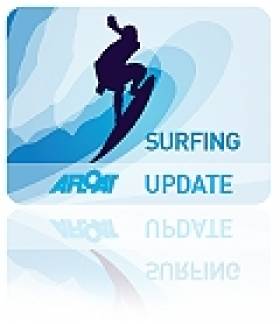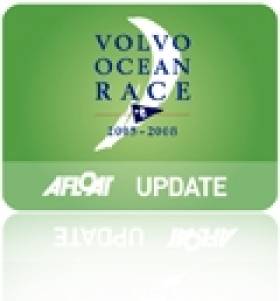Displaying items by tag: video
How-To Video: Setting a Kedge Anchor
#HOW TO - Sail Magazine have posted a valuable video guide demonstrating how to set a kedge anchor for your vessel.
Every boat should carry a minimum of two anchors to give you security should the wind shift or pick up overnight and cause the boat to sway.
The second anchor should always be a different design to the primary anchor - an aluminium Fortress anchor would be perfect for this, being light to carry should it be needed.
Choice of rope is also important for a kedge anchor, with nylon being the better bet for its strength despite its lightness.
Get all of Sail Magazine's tips for setting a kedge anchor HERE.
Thirty Years of Fungie's Frolics in Dingle
#FUNGIE - A new video posted to YouTube celebrates 30 years of Fungie the dolphin in Dingle.
The male bottlenose dolphin appeared from out of nowhere in the Co Kerry fishing village in 1983 and soon made it his home, quickly becoming an integral part of the local community.
Since his arrival Fungie has made friends and warmed hearts with people both local and across the world, such as Dutch couple Jeannine Masset and Rudi Schamhart who have been meeting him for more than 20 years.
Meanwhile, locals hope that new measures for harbour users proposed earlier this year won't bring an end to boat trips to meet Dingle's most famous resident.
Watch the Tall Ships Leaving Dublin Bay
#TALL SHIPS - TheJournal.ie this week highlighted this wonderful video of the Tall Ships Races fleet as they departed Dublin Bay on Sunday 26 August.
Filmmaker Rachel O'Connor captured this footage on board the racing sloop Sceolaing along with its owners the Delaps.
"Nearly everyone who had a boat was out at sea," says O'Connor. "The spectacle was breathtaking."
Judging by the sights she captured here, we're inclined to agree!
French Surfer Rides the Big One Off West of Ireland
#SURFING - Surfing website MagicSeaweed captured French surf pro Justine Dupont in top form at Aileens off the West of Ireland on Sunday 21 October.
The 21-year-old paddled out to the secret big wave surfing spot with 2011 Billabong XXL Biggest Wave Award winner Benjamin Sanchis, where they promptly broke their boards caught in the biggest barrels of the day.
Turning their attentions instead to the "infamous cold water right-hander", Dupont was towed into a stunning 12-foot tunnel of water - as the video above shows.
"It was more than a session, it was a mission," said Dupont. "From getting smashed paddling out to surfing that perfect beautiful wave, it was a day I’ll never forget."
MagicSeaweed has photos and video of Dupont's Aileens adventure HERE.
Video Shows Surfers Taking On West Coast Waves
#SURFING - WorldIrish brings us another gem of a video as surf pros take on the challenging waves off the west coast of Ireland.
It's just the latest praise for the Emerald Isle as a world-class surfing destination.
Easkey Britton Makes Waves in Iran for New Documentary
#SURFING - A documentary charting Easkey Britton's history-making surfing trip to Iran will premiere on French TV later this month, according to The Irish Times.
The hour-long film was shot by French filmmaker Marion Poizeau during the Donegal surf champion's visit in September last year to Chabahar, a coastal town in southern Iran on the Pakistan border.
Britton - of the northwest surfing dynasty - became the first woman ever to surf in Iran when she donned a full-length 'hijab swimsuit' and took to the waves in near 40 degree temperatures - attracting much attention from the locals.
“Iran is not known as a surf destination," she says, "but experiencing a country through surf gives you a different perspective. It was a leap into the unknown, but I thought I’d give it a go.”
Britton is now hoping to encourage more women and girls in the Middle East to take up surfing, noting its growing popularity in the Gaza Strip.
The Irish Times has more on the story HERE.
Video Shows Divers Exploring Carinthia Wreck Off Donegal
#DIVING - WorldIrish have done it again with another great video find - this time following a team of divers off Donegal as they explore the wreck of the RMS/HMS Carinthia.
On 6 June 1940, during the Second World War, the transatlantic steam-powered cruise liner turned armed merchant ship was sunk by a German U-boat off Tory Island.
The video above shows some of the sights seen by Michael McVeigh and his diving team, including the ship's bow, the anchor telegraph and its wartime addition 6" gun.
Top Surfer Attends Special Beach Screening
#SURFING - Top Irish surfer Richie Fitzgerald was on hand for a special open-air screening of the award-winning surfing documentary Waveriders on Inchydoney beach in West Cork, as the Irish Examiner reports.
Fitzgerald, who stars in the 2009 film, attended the Movies on the Beach event on Saturday evening to help boost fundraising efforts for the Clonakilty Flood Relief Fund.
The former champion surfer has been witness to some of the most spectular waves off the Irish coast, including the biggest rollers in years recorded off Mullaghmore Head this past March.
Video Highlights of Irish Kitesurfing Nationals
#KITESURFING - WorldIrish has posted video highlights of the recent Irish National Kite Surfing Championships on Duncannon Beach as part of the annual Wexford Kite Surfing Festival.
Though the event was marred somewhat by a lack of strong winds which saw the cancellation of the men's competition, the women's and junior divisions made the best of the bad weather, with Tereza Siminova and 15-year-old James Hayden taking the top honours respectively.
Volvo Ocean Race 2011/12 Official Film Now Online
#VOLVO OCEAN RACE - The official film of the latest edition of the Volvo Ocean Race - which had its finale in Galway last month - has been posted on YouTube.
Originally broadcast in late July on TG4, the documentary takes a look back at the 2011/2012 race as the boats left Alicante last October, sailing around the world and visiting ports and cities such as Cape Town, Abu Dhabi, Sanya, Auckland, Itajaí, Miami, Lisbon, Lorient and Galway.
Delving into the world’s premier global race and one of the most demanding team sporting events in the world, VOR bosses say the film gets close to the action in the ultimate mix of world class sporting competition and on-the-edge adventure, a unique blend of onshore glamour with offshore drama and endurance.



























